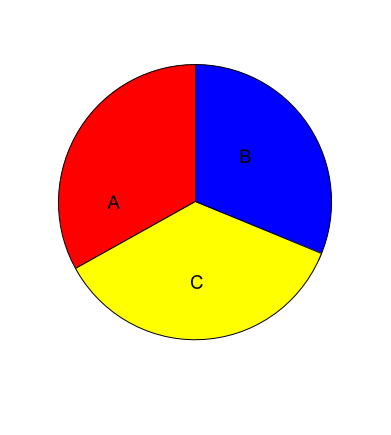In my last article, I discussed what a work made for hire is and how to create one. A work made for hire allows the copyright in the work to be owned by someone other than the author of the work. They are created when a contract specifies that the work is a work made for hire as part of a larger work or is created as a part of the creator’s employment. Works made for hire are important in the world of game development because they allow for collaboration – like between a programmer, an artist, or a musician – while the studio can retain the copyright over the finished game, helping with publication and avoiding future issues. What happens when more than one person works on something? What’s the deal with collaborative copyrights?
In this article, we’ll be discussing other types of collaborative works which are created when you don’t have a contract specifying a work made for hire or made during employment. In general, you want to avoid having these rules applied to your game, so a contract stating that the work is a work made for hire is essential! A work made for hire is generally the best option for most indie studios. Still, these can come up when a project is worked on informally between friends, as part of a game jam, or as a poorly thought out revenue share project.
Joint Works– Collaborating on One Work

A joint work is a work that is made by two or more individuals whose work merges into a single work. This would be the default form of a collaborative copyright absent a contract creating a work made for hire. This contribution generally has to go beyond just ideas and has to be a part of the actual final fixed work, not just the prototypes or early drafts. In a joint work, each component of the overall finished work is inseparable from the other. A group of people may collaborate on a single work where multiple people are contributing to different parts of the finished project together, such that each person can no longer point to individual pieces of the overall work and say that they made this individual piece that could stand on its own.
Alternatively, a joint work could be created where an individual contributor could point to their individual contributions, but those contributions would not stand as a fixed work on their own. Code is a good example of this, where often isolated parts of an overall game’s source code couldn’t stand as a fixed work without the contributions of the rest of the work, particularly where multiple people are working on separate pieces of the overall underlying game code.
Each author that contributes to a joint work is a co-owner of the copyright of the entire work, as stated in 17 U.S. Code § 201. This means that each co-owner has all of the rights that a copyright owner would have in the entire finished work, like the ability to exclude others from using the work or grant other third parties permission to use the work.1
It is as if each individual author has the copyright, without the ability to enforce it against one another. In game development, this would mean that any of the co-owners of the copyright could have the right to sell the game or otherwise exploit the copyright, which is not the ideal scenario to be in. The US Copyright Office would view each co-owner of the copyright as having an equal right to enforce or register the copyright in the finished work. These co-ownership interests can be assigned or sold to one another and modified through contract, as with any other interest in a work, so it is possible for an ownership interest in a joint work to be modified to only have a single owner after the work is completed.
Collective Works- A Collection of Independent Works

Collective works are a bit different from joint works. When the work is part of a compilation, like a magazine, anthology, album, encyclopedia, or other larger work, this is a collective work. Think of a game that’s a collection of several other games. This would be a collective work. The big difference in this definition from a joint work is that each individual piece of the compilation could stand as a fixed work on its own, capable of being protected by copyright individually if separated from the overall work.
In a collective work, the copyright in each contribution, such as each individual game in the collection, is still held by the individual authors and is not affected by its inclusion in the compilation. These individual authors have no rights in the compilation, only in their respective works. The copyright in the compilation or collection is held by the compiler and is presumed (in the absence of any contract stating otherwise) to have the right to reproduce and distribute each individual part of the compilation only as part of that compilation as well as any revisions that may happen. There is copyright protection granted to the compilation, which is considered to be its own work for the purposes of copyright, as well as copyright in each individual work held by their respective holders.

In the video game world, an example of a collective work would be a collection or compilation of games. This is distinct from a Humble Bundle, Steam Bundle, or other similar bundle of games which probably wouldn’t be a collective work since the bundle as a whole wouldn’t likely qualify as a copyrightable work. Each work would still be an independent work that holds an individual copyright, they’re just being sold together, not compiled. This is more about things like the Orange Box by Valve, Super Mario All-Stars for the SNES, the recent Castlevania or Mega Man collections, or other similar collections.
To create a collective work, the creator of the compilation must obtain permission from the copyright owners of each separate part, generally in a written and signed contract. This contract should clearly lay out what rights are being granted as well as how royalties are to be paid if any, and how credit is to be given, among other important provisions.
Conclusion
Collaboration is essential to game development. For most video game developers, it is best to have the contributions of collaborators on a work be classified as a work made for hire for copyright purposes. However, in the absence of a contract creating such a right, the finished work may be considered a joint work, or even a collective work in some situations. While these may be desirable for some sorts of deals where rights are retained by individuals, make sure you understand what rights are and are not being given or held by collaborators as part of a larger game.
Have a question for your own project? Want to make sure your copyrights are ready for commercial use? Schedule a free consultation below.
- Though not exclusively, since each other joint author also has this right. ↩︎

Leave a Reply